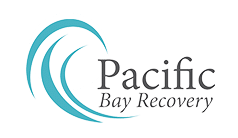Dual Diagnosis: The Two-Part Integrated Recovery Program
If you treat one part of substance abuse, such as the physical body, then you must treat the mind at the same time. If you are a substance abuser, such as opioid drugs or alcohol (or both), when you enter a recovery treatment center, you first go through physical and mental assessments. From the results of these tests, a unique integrated dual diagnosis treatment (IDDT) is designed by the medical staff to help you recover from your enslavement to whatever substance you use.
Most substance abuse disorder (SUD) cases require that a patient undergo a physical detoxification treatment plan (or session) that could last from two weeks to a month, depending on the circumstances of the case. While there can be similarities between cases, there are no two cases that are exactly alike, as there are no two people who are exactly alike, even with twins.
For example, one patient who abuses opioid drugs, mainly fentanyl, will likely do a step-down process of detoxification, as doing a hard-stop (“cold turkey”) process could trigger physical repercussions, such as a heart attack, a stroke, panic attacks, or other full-blown physical problems.
Adding on the Mental Treatments
Another problem that occurs, particularly with patients who have abused substances for a long time (years), is that they may exhibit greater levels of mental disorders, such as schizophrenia, mood disorders, severe anxiety, and more. Substances, used for long periods, change the body’s composition, particularly on a cellular level, such as blood composition.
This also occurs in brain cells where they can be altered, even damaged. Such brain cell damage is responsible for many of the symptoms of personality changes observed by those close to the patient, such as mood disorders, particularly where there is depression, extreme highs, agitation, intense anger, and more.
At a certain point, patients with damaged brain cells, are unable to discern what making a good decision is. Disconnection in the cognitive area can cause the patient to no longer understand (or decide) whether a social situation is dangerous or not. The goal of the treatment plan is to work with the patient to optimize their health and immune levels and, hopefully, allow the body to regenerate these cells back to normal as much as possible while eliminating the effects of substance abuse.
During detoxification, preliminary mental assistance is in the form of encouraging the patient to stay strong while undergoing the detox process. Any fears, irrational or otherwise, are also addressed and explored as part of helping with understanding the mental treatment process.
For the mental health psychologist, it becomes important to determine whether the patient had a mental health issue that led to the substance abuse as a method for escaping painful emotions, or whether the substance abuse caused the mental aberration in the cognitive thinking process. This helps the mental health counselor determine what the therapy should focus on.
Adding on Supporting Treatments
Massage Therapy: Some treatments can be added on during the detox session, such as body massages, which help with reducing tension in the body that occurs with withdrawal symptoms and potential anxiety. Muscles tighten when patients feel anxiety or pain. Massages, therefore, knead out bunched muscles, reducing pain in the body, and providing a sense of greater comfort as aches and pains are reduced or eliminated. Not only is pain reduced, but blood circulation increases, delivering more oxygen throughout the body and allowing for cell regeneration.
Cupping and Acupuncture Therapies: Acupuncture therapy stimulates the release of endorphins that reduces or eliminates those painful areas during detox. Thin needles are inserted into the body at specific points along a charted path of the body area. Such applications also help to reduce nausea while experiencing withdrawal symptoms during detox.
Cupping therapy is a practice of pulling toxins out of the body by using glass cups, placed along the same charted path of the acupuncture practice. Once in place, the cup is mechanically suctioned into place and left for a prescribed amount of time. This therapy is particularly useful when you want to speed up the toxin removal of drugs, such as fentanyl.
Holistic Therapy: Holistic therapy includes the above-mentioned therapies, but also includes nutrition therapy, meditation, yoga, and exercise therapies. Using meditation and yoga therapies together is an excellent choice as you get a little exercise, and you are also centered on the mind. Both practices help with calming you down, especially if you have racing thoughts, due to anxiety.
Nutrition is a big part of your recovery process as you need nutritious food to help with regenerating your body, and your circulatory system, and eliminate toxins. As your body begins healing itself, you begin to realize what you have been missing as part of living a good healthy life. Exercise is also good as this helps with providing more oxygen throughout the body and your muscles become sturdier, allowing you to move better. Swimming (low impact) is great if you have injuries or disabilities and need to be in a weightless environment. Bicycling is also another good activity that helps strengthen your legs and increases blood circulation.
Get Help Today to Begin Living a Better Life
Pacific Bay Recovery can help you with any substance addiction and/or mental issue you might have so you can regain a happy and functional lifestyle again. Call us for a free consultation and to set up an appointment to start getting help as soon as possible. 619-350-8220.


